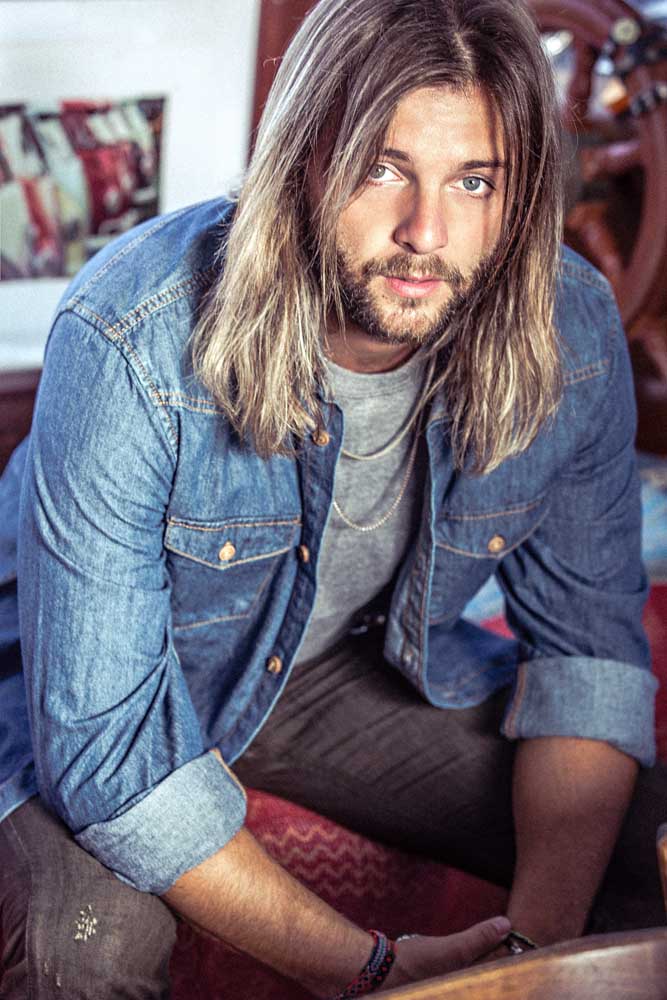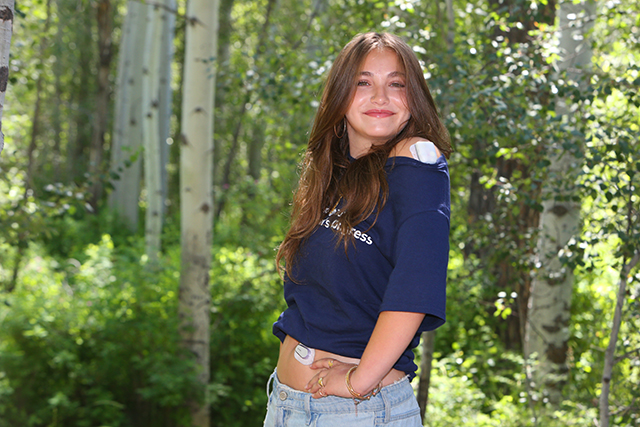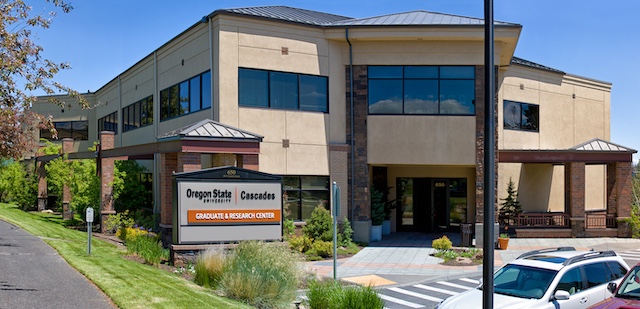The unfolding story for residents of Vancouver, B.C.
Published 12:02 am Sunday, April 9, 2017

- Totem poles in Stanley Park, just north of downtown Vancouver, British Columbia, Canada, March 20, 2017. Stanley is home to some of the tallest trees in the city, including a Douglas fir that reaches more than 200 feet high and measures 8 feet across. (Jeremy Bittermann/The New York Times)
Vancouver, British Columbia, has what you might call an improvisational air. The city makes itself up as it goes along because we are all really complete newbies here, excepting, of course, the Musqueam, Squamish and Tsleil-Waututh peoples on whose unceded territory the whole Vancouver project has been and continues to be built.
I make this observation with the blend of affection and impatience one tends to acquire after decades in a place. But I say it also knowing that’s how I got here.
Trending
Vancouver was my father’s idea. The son of an Irish blacksmith, made good with a degree in engineering, he had lived all over the world — a restless young man who had ended up in Guayaquil, Ecuador, where he met my mother, a Holocaust survivor whose family had washed up on those unlikely shores. A dozen years later — having lived in Brooklyn Heights, New York, and in Jackson, Michigan — the family found itself in San Tomé, Venezuela, where (in my imagination, at least) my father counted five kids at the table one morning and decided maybe it was time to settle down. I see his finger tracing its way westward across a map of Canada, the names of cities and towns becoming less and less familiar. When he ran out of continent, he had found his spot. I’m quite sure my mother had never heard of Vancouver.
Terminal City, they used to say. The end of the line because the transcontinental Canadian Pacific Railway ended here. But it was a last stop in other senses as well, carved out of a rain forest that seemed ready to overwhelm it. You can still see it that way, nature leaning in around the city. To the north: the snow-capped Garibaldi Highlands, their timbered slopes plunging into a cobalt ocean, gulls crying above the still fish-filled waves.
Viewed from the pebbly sand of Kitsilano Beach, the skyline of Vancouver, the actual built substance of the place, can seem on occasion like a glimmering mirage, a seam of mirrored glass suspended between what lies above and below, a recent and provisional thing, reflecting what is permanent around it: the sky and mountains, the endless sea.
That is, in fact, what many people will first note about this place, the pleasant encroachment of nature and the way the city weaves itself into lands not yet entirely tamed. Cougars still visit backyards in North and West Vancouver. You will read of the odd bear attack and, more frequently, of hikers having to be rescued off those picturesque mountains. You will see orca pods off the beaches and coyotes in the forests near the University of British Columbia. (You can send at least one of them a message on Facebook: see “UBC Coyote.”)
Even having spent most of my life here, I still return from trips and exit the Vancouver International Airport anticipating my first deep inhalation, like an oenophile might anticipate a favorite wine, entranced by accents real and half-imagined: barnacles, saline notes, a whiff of fish, trees.
Western hemlock, red cedar, Douglas fir and Sitka spruce. I have a number of favorite walks that can be used for deeply restorative purposes. In Stanley Park, take Bridle Path up into the forest, stop where the path crosses Tatlow Walk and you will be in a stand of some of the tallest trees in the city. A Douglas fir reaches more than 200 feet high and 8 feet across; a stand of cedars covered in heavy moss rises out of the huckleberry and the sword fern. You may find you forget the larger city, whose sounds tamp down to a whisper among these trees, the wind making white noise in the canopy, a sense of the breathing ages.
Trending
But if that is our contact with what is established and certain, then the rest of the Vancouver experience lives in the contrast. I recently conducted an informal Facebook poll on Vancouver that ended up proving this point. Citing Peter Ustinov’s long-ago quip that Toronto was “New York run by the Swiss,” I asked what parallel statement might be made about Vancouver.
Chaos ensued. There was precisely zero agreement. Comparison cities ranged from San Francisco to Singapore, Oslo to Dubai. Narnia was mentioned. As for who was running the show out here, nobody mentioned the Swiss.
Which doesn’t prove much except to say that the locals I know are not above acknowledging a flaky side to their hometown. And it’s really hard to argue that point, given that Mayor Gregor Robertson was said to have been financed by billionaire Americans who moved here and started a New Age retreat. That Vancouver would spawn the cultlike yoga empire Lululemon at roughly the same time seems almost obvious.
Still, for me, West Coast wackiness doesn’t capture it entirely.
In Vancouver, ask a random citizen and you’re liable to get anything.
That can be liberating, of course. My father clearly considered that feature more of an opportunity than a weakness. You can see this in the remarkable mid-20th-century Kodachrome color photography of Fred Herzog, whose work hangs at the Equinox Gallery, and without reference to which the city arguably cannot really be understood. In shots of crowded downtown streets, overflowing store windows and a teeming waterfront, Herzog — who was a young German immigrant at that time — shows a city energetically inventing itself, building itself, consuming itself. We’re taught to view consumerism and advertisements with skepticism today. But Herzog’s photos of a man leafing through magazines at a newsstand and of the dense forests of commercial neon that used to line Granville Street are not ironic. He’s gazing with newcomer admiration at Terminal City becoming Vancouver, enthusiastically embracing the freedom to be whatever it chooses.
We’ve continued to do that, having come too late in the city-building game to have much in the way of traditions. We have the polar bear swim. We have a steam clock in Gastown that tourists like to photograph. We have a sprinkling of old office buildings and hotels through our downtown core — which is, for purposes of comparison, about the size of Manhattan from Houston Street south to Battery Park — but the fact is we have a few buildings from every architectural era the city has seen. The local novelist and artist Douglas Coupland described Vancouver as the City of Glass, which says a lot about the new city. But at street level the architecture might be better read like the rings of the city’s great trees. Deco, Chateauesque, International Modernism, Brutalism, postmodernism and on it goes, up through the ages.
It reads like no planning, although that’s not quite true either. We have had no Haussmann in Vancouver, no L’Enfant Plan. But there is Vancouverism, a clustering of planning principles that gives rise to tall residential towers, view corridors, lots of parks. The city is friendly to immigrants and our streets reflect that. Only a little over half of us are Caucasian. Visit Gastown and count the languages you hear as you walk up Hastings Street, past the downtown campus of Simon Fraser University to Victory Square — Arabic, Japanese, Korean, Mandarin, Portuguese, Spanish.
We eat well, which says a lot about how people feel free to come here and tell their own story. The Vancouver cuisine is entirely the product of immigration and the ideas of new generations. As a longtime food writer, what I have observed here speaks to that overarching point about freedom and rolling self-invention. For a number of years, we were awash in familiar farm-to-table pieties. And while ingredient-driven cooking remains a central idea, at some of our newer restaurants — AnnaLena, Royal Dinette, Savio Volpe, Torafuku — I see a more spontaneous, flavor-driven approach.
But where this town really dines, for my money, is at the casual end. We are all dim-sum-taco-sushi-tapas-kimchi-ramen-robata literate in this town. For a long time, when my office was nearby, the city’s top lunch spot was La Taquería, a taco joint squeezed into a slot on Hastings Street run by relocated Mexican 20-somethings who had originally come here to study English. The sign on the cash register said: “This is what I did with my education.” They have four locations now and are a decent emblem of the ethos of culinary Vancouver, though I feel similarly about the Peruvian restaurant Chicha on Broadway just west of Main Street founded by three non-Peruvians just because they liked the flavors.
In fairness, it has to be noted that this exact improvisational quality is also a real source of vulnerability. What’s fresh about this place, a kind of cultural and economic tabula rasa, has provided for some highly unstable outcomes. It’s noteworthy that on only two occasions has the city found itself on the brink of a sports championship: Game 7 of the Stanley Cup playoffs in both cases, in 1994 against the New York Rangers and in 2011 against the Boston Bruins. Both times, on losing, Vancouver descended into manic violence with stores looted and cars burned. There’s a troublingly adolescent quality to these disturbances, which I theorize are less likely to occur in cities that are soberly aware of their own capacity for self-harm. In Vancouver — where cyclists wear helmets and nobody carries a concealed weapon — I’ve often wondered if in our youthfulness we also lack the maturity to see our own hypocrisies. A city smugly in the downward facing dog.
As if to illustrate this point, when asked about working with an authoritarian regime on returning from a trip to China, our mayor managed only this glib reply: “You can question how worthwhile democracy is in a lot of countries right now.”
I don’t know what he meant. Maybe the suggestion is that only with the reach and power of the government that threatened to execute his girlfriend’s mother could a politician fix the dire problems of Vancouver’s Downtown Eastside, which has the lowest per capita income in North America, where an estimated half of the resident population is thought to be drug users, where homelessness and addiction can be seen on every corner, in every alley.
Or perhaps what’s being alluded to is that more political authority is required to solve Vancouver’s other vexing problem: that real estate is inflating far past the ability of typical local incomes to support ownership, that we are pricing out our artists and our young people. Interesting, on this score, that a good part of the money flowing into our city and bubbling our real estate prices is coming from people trying to escape countries where leaders have exactly that kind of power. So maybe that would work.
But don’t bet on us trying.
We choose freedom in this town, including all of its attendant complications. In the end, that will remain the beautiful problem that Vancouver will have, mayoral daydreaming notwithstanding. People will continue to come here and make up their stories as they go along. And if the sense of impermanence gets to us on occasion — which it will as we age, as we see ourselves ever more clearly, more soberly, more compassionately aware of all that we still do not do well — then we Vancouverites can take a moment to raise our eyes out of the city to those towering highlands, to the crisp lattice of snow. We’ll picture the cougars still prowling there, the swaying trees. We will see ourselves as if from a pebbly shore, a mirage trapped between what is above and below: a rolling, improvisatory work in progress.








